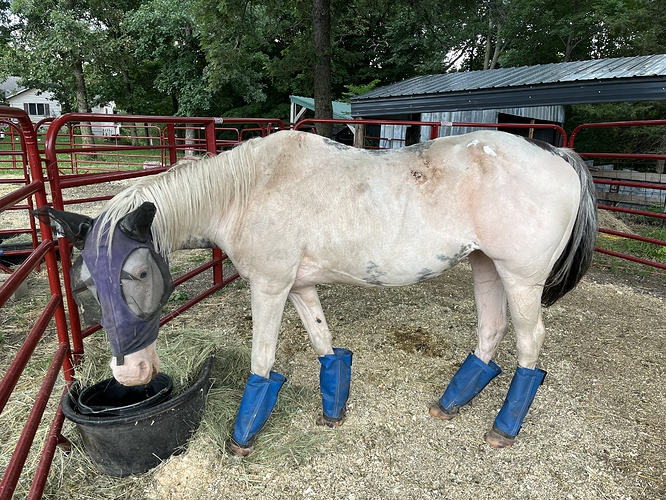If you do have to go with boots, I suggest the Easyboot Trail Original. This style was recommended to me by my farrier at the time, who also ran a horseshoeing school, plus worked at a farrier supply shop. These are what we used on our thin-soled horse before his soles thickened from the Durasole.
As boots go, this style is relatively less expensive ($68 each at Valley Vet), and Easyboot claims it’s their easiest boot to apply to the foot. I have small, hyper-mobile hands, and I was able to handle this boot better than other models (not that easy for me, but manageable – I could get them on if I had to).
The expensive Easyboot Clouds were impossible for me, although my husband could manage them (even the veterinarian who prescribed Clouds for this horse, and sold us a pair, had great difficulty applying them).
Our farrier did say to have the horse turned out as much as possible – movement is good for the hooves – and to wean the horse off the boots when able.
Best wishes with Matilda.

